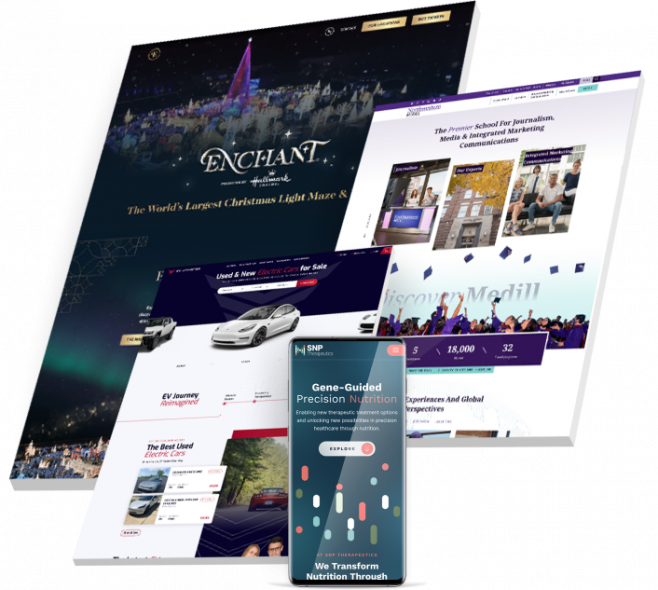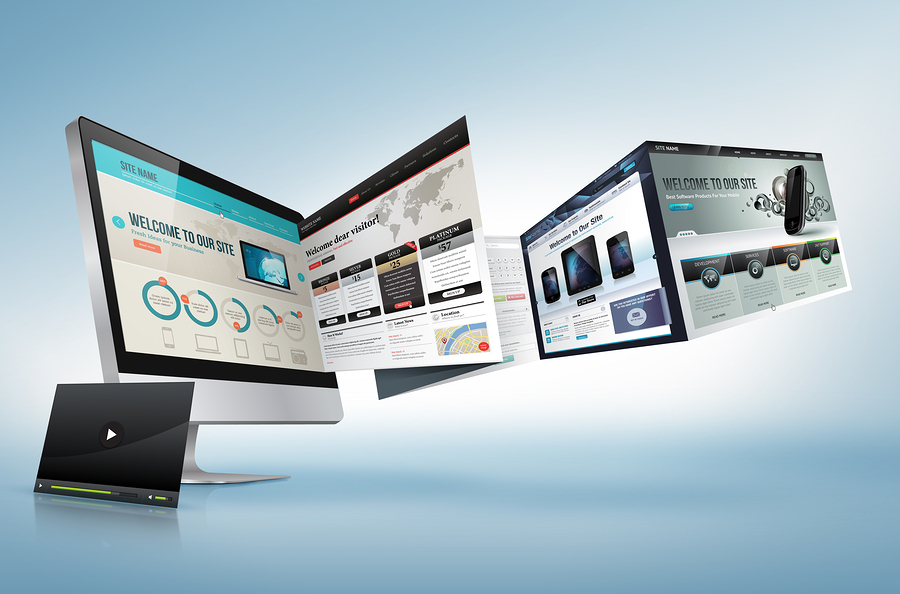The Role of Website Design in Enhancing Brand Identity and Recognition
The Role of Website Design in Enhancing Brand Identity and Recognition
Blog Article
Modern Website Style That Records Focus and Converts
In an increasingly electronic landscape, modern internet site style has become a critical variable in recording customer attention and driving conversions. By tactically using aesthetic pecking order, responsive formats, and engaging interactive components, developers can create experiences that not only draw in visitors however also assist in purposeful interactions. Reliable call-to-action approaches play a crucial function in directing customers towards desired end results. As we check out these necessary elements, it comes to be clear that understanding their interplay can dramatically influence a web site's performance and customer contentment. What are the key aspects that absolutely make a difference?
Value of Visual Hierarchy
Visual pecking order is a critical element in internet site design, as it overviews customers' focus and improves their overall experience. By tactically arranging material, developers can direct users to one of the most essential info first, thus enhancing engagement and boosting usability. Reliable aesthetic pecking order utilizes numerous techniques, including size, shade, spacing, and contrast. Larger components naturally attract the eye, while contrasting shades can stress essential messages, making them attract attention among even more subdued components.
Incorporating a sensible circulation in web content plan is vital; for example, positioning the most important info at the top of a web page promotes immediate recognition. Moreover, constant use of typography, such as varying font dimensions and designs, assists develop a clear material structure. This company not only help in navigating but also constructs trust, as customers feel much more comfortable when they can conveniently find what they are trying to find.
Ultimately, a well-executed visual power structure not just enhances aesthetic charm yet additionally considerably affects user behavior. By focusing on crucial aspects and ensuring a smooth experience, designers can successfully convert site visitors into clients, strengthening the significance of this foundational design principle in modern-day site development.
Responsive Layout for All Instruments
Developing a smooth experience across various gadgets is essential in today's electronic landscape, where individuals accessibility websites from desktops, tablet computers, and mobile phones alike. Receptive style is a crucial technique that makes sure websites adapt fluidly to different display dimensions, orientations, and resolutions. By utilizing flexible grids, images, and CSS media queries, designers can create designs that preserve aesthetic stability and functionality, no matter of the tool being made use of.
The significance of responsive design extends past visual appeals; it straight impacts individual involvement and conversion prices. A web site that operates well on all tools urges longer check outs and decreases bounce rates, as users are extra most likely to engage with web content that is easy to browse. Moreover, search engines, specifically Google, prioritize mobile-friendly sites in their positions, making receptive layout an essential component of search engine optimization (SEO)
Including receptive design not just improves user experience however likewise enhances the growth procedure. By creating a solitary site that functions across tools, businesses can save time and sources compared to establishing different mobile and desktop computer variations. Ultimately, responsive layout is a fundamental method for modern-day website style, making certain availability and satisfaction for all customers, despite their device.
Involving Interactive Elements
While a responsive layout prepares for a useful site, including interesting interactive elements is important for capturing customer interest and fostering much deeper connections. Website Design. Interactive components, such as why not check here animations, quizzes, and clickable infographics, develop a more dynamic individual experience, urging visitors to invest more time on the website
Integrating interactive functions can likewise assist customers through complex information, making it much easier to absorb material. For instance, interactive sliders can highlight product variations, while ingrained videos can supply presentations or testimonies that resonate more than static images or message. Furthermore, gamification techniques, like incentives for involving or completing tasks with material, can improve individual motivation and retention.
Effective usage of interactive elements not only improves the user experience however can likewise result in greater conversion prices. By making communications satisfying and informative, services can grow a feeling of commitment and trust fund with their target market. Nonetheless, it is necessary to balance interactivity with efficiency; excessively complex functions might impede site speed, adversely impacting user fulfillment. Eventually, integrating well-designed interactive elements can substantially raise a site's effectiveness, driving involvement and conversions in today's competitive electronic landscape.
Streamlined Navigating Practices
Reliable navigation is you could look here a keystone of any successful site, as it directly affects customer experience and material ease of access. Streamlined navigation methods guarantee that customers can easily situate info, enhancing their interaction with the website. A well-structured navigating menu ought to be instinctive and easy, generally featuring a minimal variety of main classifications to stay clear of overwhelming site visitors.
To accomplish structured navigating, developers should focus on an ordered framework that rationally arranges material. Executing breadcrumb tracks can supply customers with context concerning their present area within the website, permitting smooth backtracking. Furthermore, using drop-down food selections can successfully save area while still supplying access to subcategories.
Receptive style is essential, as navigation needs to be practical throughout all tools (Website Design). Mobile individuals, in particular, gain from touch-friendly menus and collapsible areas that maintain usability without endangering appearances

Reliable Call-to-Action Techniques
A well-crafted call-to-action (CTA) is crucial for leading individuals towards wanted outcomes on a website, as it motivates them to engage with material or purchase. To optimize their effectiveness, CTAs should be clear, compelling, and tactically put throughout the site.
First, use action-oriented language that communicates seriousness or worth, such as "Get going," "Join Now," or "Claim Your Price cut." This language not only inspires individuals but likewise establishes clear expectations about the next steps.
2nd, think about design elements; CTAs ought to stick out visually via contrasting shades, sufficient whitespace, and noticeable positioning. A button that is very easy to see and click increases the probability of individual communication.
Additionally, individualizing CTAs based on user habits or demographics can considerably boost involvement. Customized messages reverberate extra with customers, driving higher conversion rates.

Verdict
In conclusion, contemporary internet site design emphasizes the assimilation of visual power structure, responsive designs, engaging interactive components, streamlined navigating, and efficient call-to-action approaches. These elements collectively improve user experience, making sure that visitors continue to be engaged and motivated to explore content even more. By prioritizing these design principles, businesses can dramatically enhance individual retention and conversion prices, ultimately causing better success in the electronic landscape. The constant evolution of web layout underscores its crucial role in efficient on-line interaction and advertising and marketing.
In a progressively digital landscape, modern-day web site layout has actually arised as a crucial variable in catching customer interest and driving conversions.Visual pecking order is an important component in internet site style, as it guides individuals' interest and improves their overall experience.The relevance of responsive style expands past aesthetics; it straight influences user interaction and conversion rates.Incorporating receptive layout not only enhances individual experience however additionally enhances the growth process. Eventually, receptive design is a my company fundamental method for contemporary website style, making sure availability and satisfaction for all customers, regardless of their device.
Report this page